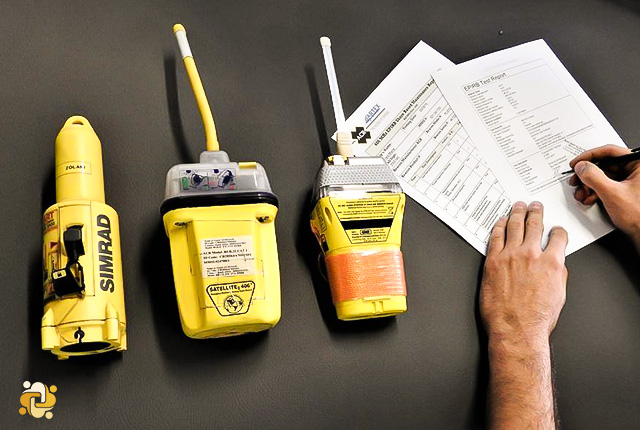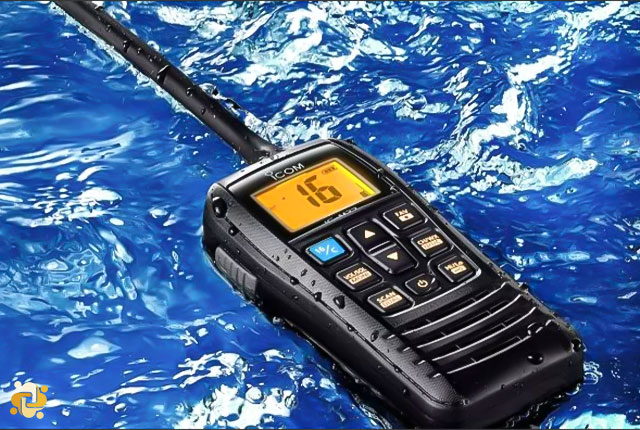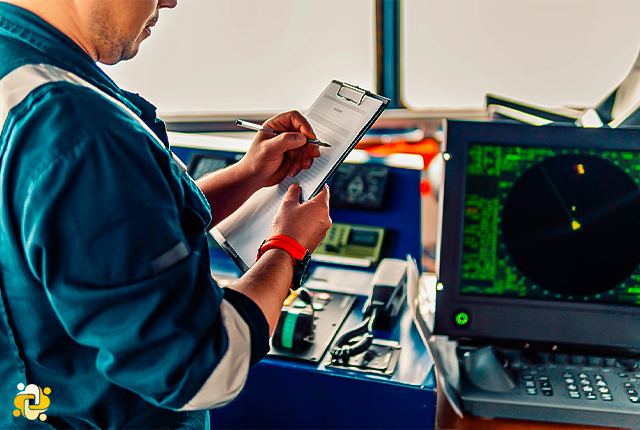
Routine test of radio equipment
2022-11-30 11:30
Introduction
Global Maritime Distress and Safety System (GMDSS) is the internationally agreed-upon set of safety procedures, types of equipment and communication protocols used to increase safety and make it easier to rescue all distressed ships, boats and aircrafts. By receiving distresses and safety warnings related to navigational hazards and weather conditions, these systems inform the crew of the dangers facing the vessels, and on the other hand, they make it possible to send emergency distress by just pressing a button.
GMDSS has been fully implemented since 1 February 1999 for all ships including existing ships. According to Chapter IV of the SOLAS Convention, all oceangoing passenger ships and cargo ships of 300 gross tonnage and above are required to carry radio equipment in accordance with these international regulations.
GMDSS consists of the following:
- Digital selective calling (DSC) - a standard for sending pre-defined digital messages from ship to ship, ship to shore and shore to ship. Based on VHF, MF and HF Maritime radio communication.
- Emergency position indicator radio beacon (EPIRB) – automated identification and locator device for Search and Rescue operations.
- NAVTEX - an international automated service for delivery of navigational and meteorological warnings, forecasts and urgent maritime safety information to ships.
- Search and Rescue locating equipment – automatically leading Search and Rescue units to the position of distress by signaling search and rescue radar transponders.
- INMARSAT – a global mobile satellite communication system providing two-way data and messaging.
The Marine Center team, in this article, tries to explain the routine evaluations of radio equipment in a useful and concise manner. Stay with us.
Periodic inspections of radio equipment
The most important functions of GMDSS equipment are as follows, so the correct performance of these functions should be evaluated.
- transmitting ship-to-shore distress alerts (by at least two separate and independent methods);
- receiving shore-to-ship distress alerts;
- transmitting and receiving ship-to-ship distress alerts;
- transmitting and receiving search and rescue coordinating communications;
- transmitting and receiving on-scene communications;
- transmitting and receiving signals for locating;
- transmitting and receiving maritime safety information;
- transmitting and receiving general communications; and
- transmitting and receiving bridge-to-bridge communications.
Daily inspections
The proper operation of the Digital Selective Calling (DSC) capability shall be tested at least once a day, in simulation, using the internal test facilities of the radio equipment. Among other daily tests, we can refer to checking the correct operation of the equipment display, internal connections and the power supply means.
Batteries (the reserve source of energy) should also be checked daily. Mainly, the ON-LOAD and OFF-LOAD voltages will be checked by a voltmeter.
- OFF-LOAD: When no equipment is connected, the battery should shows 24 volts or slightly more.
- ON LOAD: Turn off the alternating current (AC) source (Main power) and check the battery voltage. Pay attention to the voltage drop when working on the radio equipment. If the voltage drops by more than 10%, it indicates that the battery is weak or not fully charged. In this case, the batteries must be recharged.
The function test of all printers of radio equipment must be performed, too.
Weekly inspections
It is necessary to test the proper operation of the DSC capability at least once a week using a test call on related safety and emergency frequencies when the ship is within communication range of a DSC-equipped coast station. This test will be done by selecting the Test Call menu in the radio equipment.
The six emergency and safety frequencies has been mentioned below:
- 2182 kHz: International Maritime Distress and Calling Frequency for Radio telephony
- 4340 kHz: NATO Combined Submarine Distress
- 8364 kHz: Survival Craft
- 121.5 MHz: International Aeronautical Emergency Frequency
- 156.8 MHz: International Maritime Distress, Calling and Safety Frequency
- 243.0 MHz: NATO Combined Distress and Emergency Frequency
- 406.0 MHz: Emergency Position Indicating Radio Beacon (EPIRB)
Coast station identifiers can be found in Volume I of the Admiralty List of Radio Signals.
Monthly inspections
EPIRB self-test without using satellite system should be checked monthly so that no emergency signal is transmitted during the self-test. Further, battery voltage, output power, system frequency and absence of physical damages will be checked, too.
The batteries’ expiry date, the hydrostatic release unit (HRU) and the safety clip connection will be carefully inspected.
The SART is also equipped with a self-test mechanism to test the operational performance of sending information. SART is to be tested by using the ship's 9 GHz (X-Band) radar. This test should preferably be conducted in open seas to avoid interference with the radar display.
Any VHF equipment should be tested at least once a month to ensure proper operation in emergency situation. The test must be performed on a frequency other than VHF channel 16 (156.8 MHz). The expiry date of the battery is another item that should be controlled and replaced if necessary.
NAVTEX also has a feature that can test its battery, keyboard, LCD and RAM. It is possible to test this device and detect errors, if any. This is simple just by selecting the related function in the menu.
INMARSAT is also equipped with a diagnostic test that checks its correct operation. PV test or performance verification test can be done every month. This test consists of receiving a test message from a LES (local earth station), sending a message to an LES and an emergency notification test. The PV test can be started from the TEST menu under device options.
The test results will be reflected in the "PV Test Result" option and can be printed and recorded, if needed. BBER indicates a system error.
Connections and batteries should also be checked. In old type batteries, the electrolyte level and specific gravity of each cell must be controlled and recorded. One of the most common problems of these types of batteries is sulfation, which can reduce the specific weight of the cells and, as a result, reduce the capacity of the battery. However, maintenance-free batteries on board don’t need to control in this way.
It is recommended to visually inspect all antennas every month in terms of installation status and the possibility of damage to the cables. The antennas are located on monkey island. Any dirt and salt on the antennas must be removed. (Before doing anything on the antenna, make sure that the equipment is turned off and isolated.)



